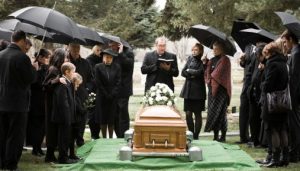widow
The Widow
Vocabulary
| inherit | firm (2) | construction |
| expand | order (2) | keep it up |
| profit | cash flow | downturn |
| gain | reverse | prolonged |
| fail | manage | terminate |
| run (2) | pink slip | household |
| source | income | responsible |
| funeral | function | mortgage |
| at first | show up | operate (2) |
| try | persuade | particular |
| involve | take care | run/ran/run (2) |
| various | trade (2) | resistance |
| aspect | structure | coming along |
| habit | improve | discontinue |
| widow | describe | charge (2) |
| assign | no time | ever been |
| plead | function | contribute |
| CEO | recover | didn’t matter |
| buddy | in charge | profitable |


The Entrepreneur
For over 20 years, Mr. Lunt had build, managed, and expanded his construction company.
They had lots of contracts. Business was good.
Reversal
Then the economy went into a prolonged recession. Business slowed. They lost money.
Mr. Lunt began to spend more time away from home.
Then at 2:00 am Saturday morning after leaving a bar, he failed to stop at a red light…
Inheritance
Mrs. Lunt inherited his company.
However she had no experience in running the business since she had spent most of her adult life taking care of their children and household.
In Charge
Now she was responsible for a $7 million dollar company that had been the family’s only source of income — and she still had a mortgage and needed to help the children, now in college.
A week after the funeral, Mrs. Lunt showed up at the company.
The first thing she did was call a meeting with all the managers and asked them to explain to her how the company functioned.
Let Us Handle Everything
At first they tried to persuade her to let them run the company and take care of business.
But Mrs. Lunt made it clear that she was serious about getting involved.
And so they took her around the company building and described the various aspects of the construction trade.
Questions
When they showed her a particular product or service that they offered, Mrs. Lunt would ask, “Uh…What’s happening here? What are you doing?”
And they told her.
New Habit
After doing this for while, Mrs. Lunt got into the habit of asking three main questions: “Is it working?”, “What’s working?” and “What’s not working?”
If something worked, she instructed managers or workers do more of it. If it didn’t work, they had to change, improve or discontinue it.
Resistance
Oftentimes there was resistance. “Well that’s how we’ve always been doing it; that’s how it was under your husband.”
“Well I’m in charge here; I’m the boss now.” she insisted. “So change it, improve it or terminate it!”
New Questions
Not long afterwards, Mrs. Lunt began asking, “Who’s working?”, “Who’s not working?” and “Is ‘X’ working?”
In no time at all, she switched and reassigned all the staff and their responsibilities so that everyone was doing the appropriate tasks and maximizing efficiency and productivity.
Out, Out, Out
Those who could not contribute fully were given pink slips.
“But you can’t do this to me!” pleaded numerous employees. “I’ve been working here for over 20 years! Your husband and I went to school together! We were buddies!”
But it didn’t matter to the new CEO.
Performance
Within less than a month, the company began to have a positive cash flow. After three months, it had fully recovered. Six months later the company was more profitable that it ever had been in over 20 years.
* * * * * * * *
1. Mr. Lunt was an entrepreneur. True or false?
2. What happened to him and his company?
3. Had Mrs. Lunt worked in the company as a manager or assistant?
4. Did the managers have confidence in her, initially?
5. What became her management style?
6. There was some resistance among employees. Yes or no? If yes, why was there resistance?
7. She was not as successful as her husband had been. Yes or no? Why?
8. Explain the proverb: “He looked at the trees so much, he couldn’t see the forest.”
A. How could this apply to your company or organization?
B. Would there be much resistance?

